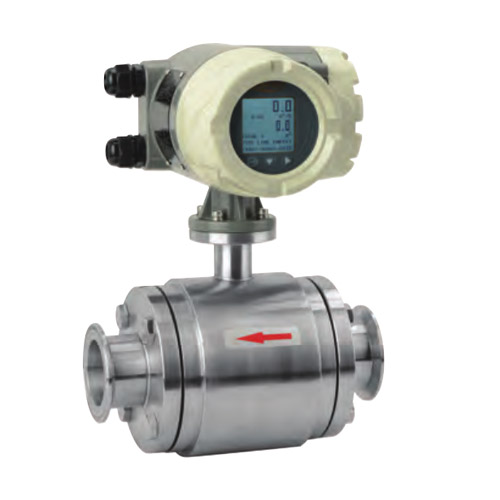structure
The structure of electromagnetic flowmeter is mainly composed of magnetic circuit system, measuring catheter, electrode, shell, lining and converter.
Magnetic circuit system: Its function is to produce a uniform DC or AC magnetic field. The DC magnetic circuit is realized by permanent magnets. Its advantage is that the structure is relatively simple and the interference from the AC magnetic field is small, but it is easy to polarize the electrolyte liquid passing through the measurement catheter, so that the positive electrode is surrounded by negative ions, and the negative electrode is surrounded by positive ions. Enclosure is the polarization phenomenon of the electrodes and causes the internal resistance between the two electrodes to increase, which seriously affects the normal operation of the meter. When the pipe diameter is large, the permanent magnet is correspondingly large, heavy and uneconomical. Therefore, the electromagnetic flowmeter generally uses an alternating magnetic field and is excited by a 50HZ power frequency power supply.
Measuring catheter: Its function is to let the measured conductive liquid pass. In order for the magnetic flux to be shunted or short-circuited when the magnetic lines of force pass through the measuring tube, the measuring tube must be made of non-magnetic, low electrical conductivity, low thermal conductivity and a certain mechanical strength material. Non-magnetic stainless steel, glass steel, high strength can be selected Plastic, aluminum, etc.
Electrode: Its function is to draw out an induced electric potential signal proportional to the measured. Electrodes are generally made of non-magnetic stainless steel and are required to be flush with the lining so that the passage of fluid is not obstructed. Its installation position should be in the vertical direction of the pipeline to prevent sediment from accumulating on it and affecting the measurement accuracy.
Shell: It is made of ferromagnetic material. It is the outer cover of the excitation coil of the distribution system and isolates the interference of the external magnetic field.
Lining: There is a complete electrical insulating lining on the inner side of the measuring pipe and the flange sealing surface. It directly contacts the liquid to be measured, and its function is to increase the corrosion resistance of the measuring tube and prevent the induced potential from being short-circuited by the metal measuring tube wall. The lining materials are mostly corrosion-resistant, high-temperature, and wear-resistant polytetrafluoroethylene plastics, ceramics, etc.
Converter: The induced potential signal generated by the liquid flow is very weak and is greatly affected by various interference factors. The role of the converter is to amplify and convert the induced potential signal into a unified standard signal and suppress the main interference signal. Its task is to amplify and convert the induced potential signal Ex detected by the electrode into a unified standard DC signal.







 English
English 中文简体
中文简体 русский
русский España
España